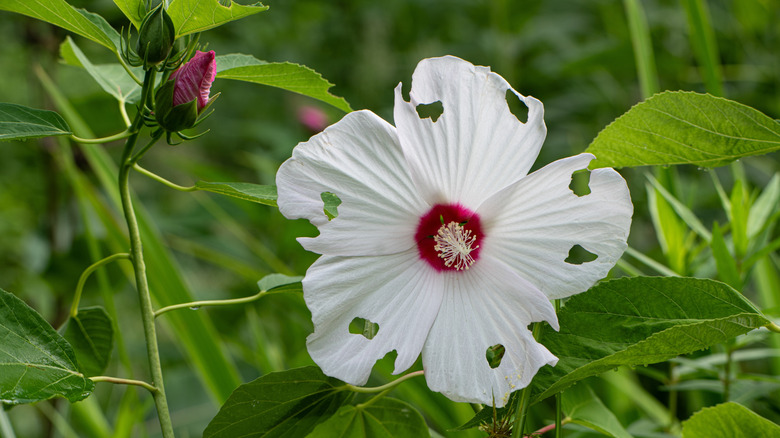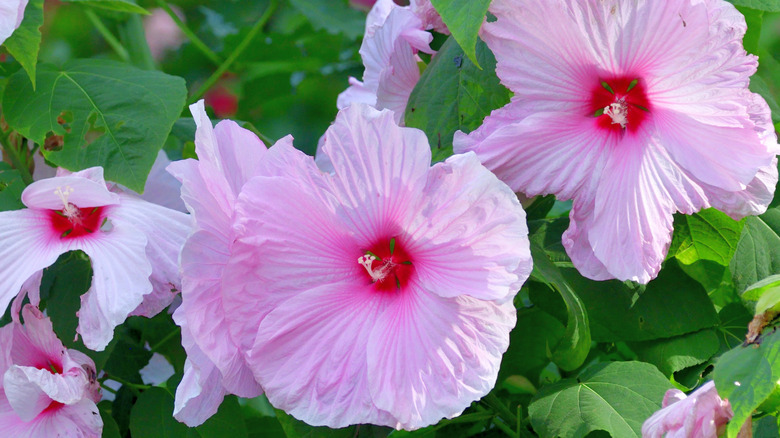Pests You Didn't Realize Swamp Mallow Was Attracting To The Garden
Even the most dedicated gardeners get tired of dealing with pests. Just when everything seems to be growing perfectly, tiny invaders show up, munching leaves, dropping spores, and leaving sticky messes all over your garden. Some plants, like tomatoes, are obvious pest targets, while others quietly attract unwanted visitors. Swamp mallow (Hibiscus moscheutos), also known as hardy hibiscus, is susceptible to several types of pests, from Japanese beetles to aphids, which can spread to other plants in your garden.
Despite its vulnerability to certain types of pests, swamp mallow is a hardy perennial that grows in Zones 4 through 9. Its large, dinner-plate-sized blooms give it a tropical look, similar to its cousin Hibiscus rosa-sinensis. However, hardy hibiscus thrives in northern gardens, and it's often selected to attract pollinators. Hibiscus plant enthusiasts may not be aware that it attracts pests like aphids, white flies, and scale. These sap-sucking pests cause foliage to curl and may attract ants and mold.
Swamp mallow can also attract insects less commonly associated with it, such as Japanese beetles (Popillia japonica), an invasive species that will devour foliage. While they may not kill your hibiscus, they can certainly ruin its appearance. Other pests to watch out for include pink hibiscus mealybugs, hibiscus bud weevil, thrips, and root knot nematodes. With the right care and a plan to manage pests, you can keep hibiscus plants thriving and healthy.
Keep swamp mallow healthy with an integrated pest management approach
There are several steps you can take to prevent pests from taking over your hardy hibiscus plants. Start by providing swamp mallow with the conditions it needs to stay healthy and resist pests. Native to swamps — as its name suggests — swamp mallow prefers rich, constantly moist soil in full to part sun. However, soil that's too wet or doesn't drain can also stress the plant. Other ways to keep it healthy include cutting back in the fall and trimming in the spring to encourage bushy growth.
Using a combination of companion planting techniques and biological controls, you can prevent pests even further. Introducing lacewings and ladybugs, along with plants that provide them food and shelter, can help solve pest problems before you even notice they're there.
Once you've taken preventative steps, implementing an integrated pest management approach that includes regular monitoring and control measures will help keep swamp mallows healthy. Keep a close eye on your hibiscus plants, and act immediately if pests are detected. Whether through hand removal of Japanese beetles, spraying aphids off with water, or using neem oil on your plants, immediate action is crucial to stop infestations. If all else fails, you may need to use chemical controls as a last resort.

